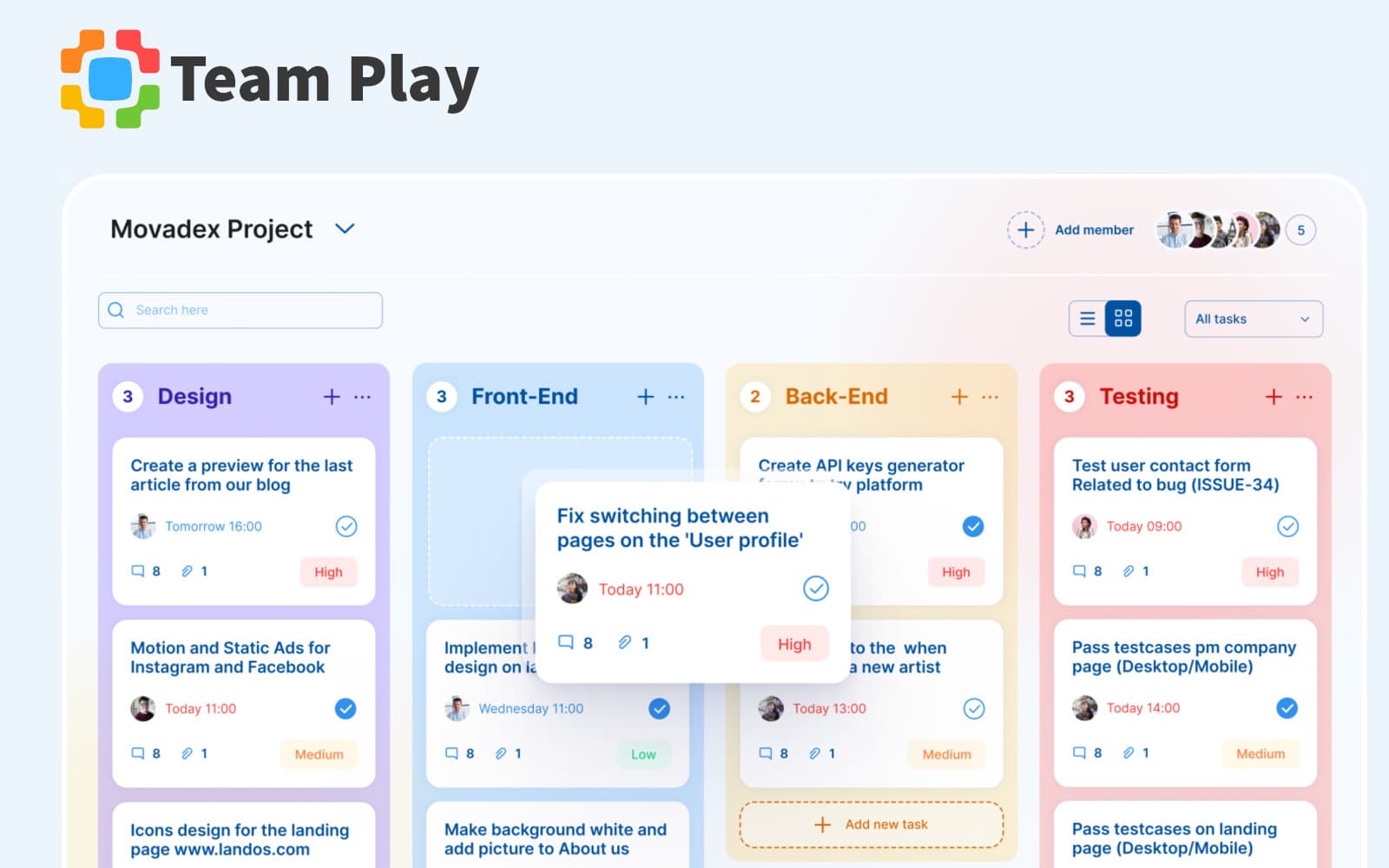Case Study

Team Play
Product
Team Play
Services
Design, Development, Strategy
Website
Coming soon
Client Overview
Team Play is an innovative software-as-a-service company specializing in solutions for project management. They are dedicated to enhancing the workflows of software engineering teams, with a focus on promoting asynchronous communication to overcome the challenges of synchronous Agile methodologies. With an emphasis on flexibility and efficiency, Team Play's vision is to transform how teams collaborate and make decisions.
The Challenge
Agile methodologies, such as Scrum, are widely adopted by software engineering teams to promote collaboration and maintain momentum. However, these frameworks often rely on synchronous communication, which presents significant challenges for modern teams. Key issues include:
Team Play's leadership identified a growing preference for asynchronous workflows, particularly for activities like daily updates. Asynchronous standups allow team members to share updates at their convenience, eliminating the need for disruptive live interactions. This approach saves time, minimizes interruptions, and caters to diverse working styles.
Agile ceremonies often require critical decisions to be made and documented promptly. In synchronous settings, decisions can be lost in the shuffle of discussions or poorly documented, relying too heavily on human short-term memory. Asynchronous tools provide the opportunity to thoughtfully record decisions and actionable items without the rush of live meetings.
Coordinating live meetings, such as Daily Standups, Backlog Refinement, Sprint Planning, Sprint Reviews, and Sprint Retrospectives, is a daunting task for globally distributed teams. Time zone differences, such as those between Australia and the US West Coast, often force members to compromise on schedules, leading to decreased productivity and engagement.
Traditional Agile ceremonies often require lengthy video calls or in-person sessions, which can deviate into unrelated discussions and waste valuable time. These meetings are particularly burdensome for remote teams, where prolonged video calls are not only time-consuming but also draining.
Our Approach
1. Defining and Engaging the Target Audience
Thytanium came up with a plan to define the Target Personas for Team Play's product. Then, several platforms, websites and communities where identified where these personas are active. Finally, an Outreach Plan was outlined to engage with these communities, understand their pain points and needs, and present the solution from Team Play.
2. Creating a Landing Page
A landing page was created to outline key features like asynchronous updates and decision automation, and to showcase the features of Team Play. Users could sign up for early access and participate in a feedback group. Conversion rate and engagement were tracked to measure the interest in the product.
3. Building a Prototype (In Progress)
Users who signed up for early access were invited to test a live prototype of Team Play. The prototype was built using HTML/CSS and allowed users to interact with the product, provide feedback, and suggest improvements.